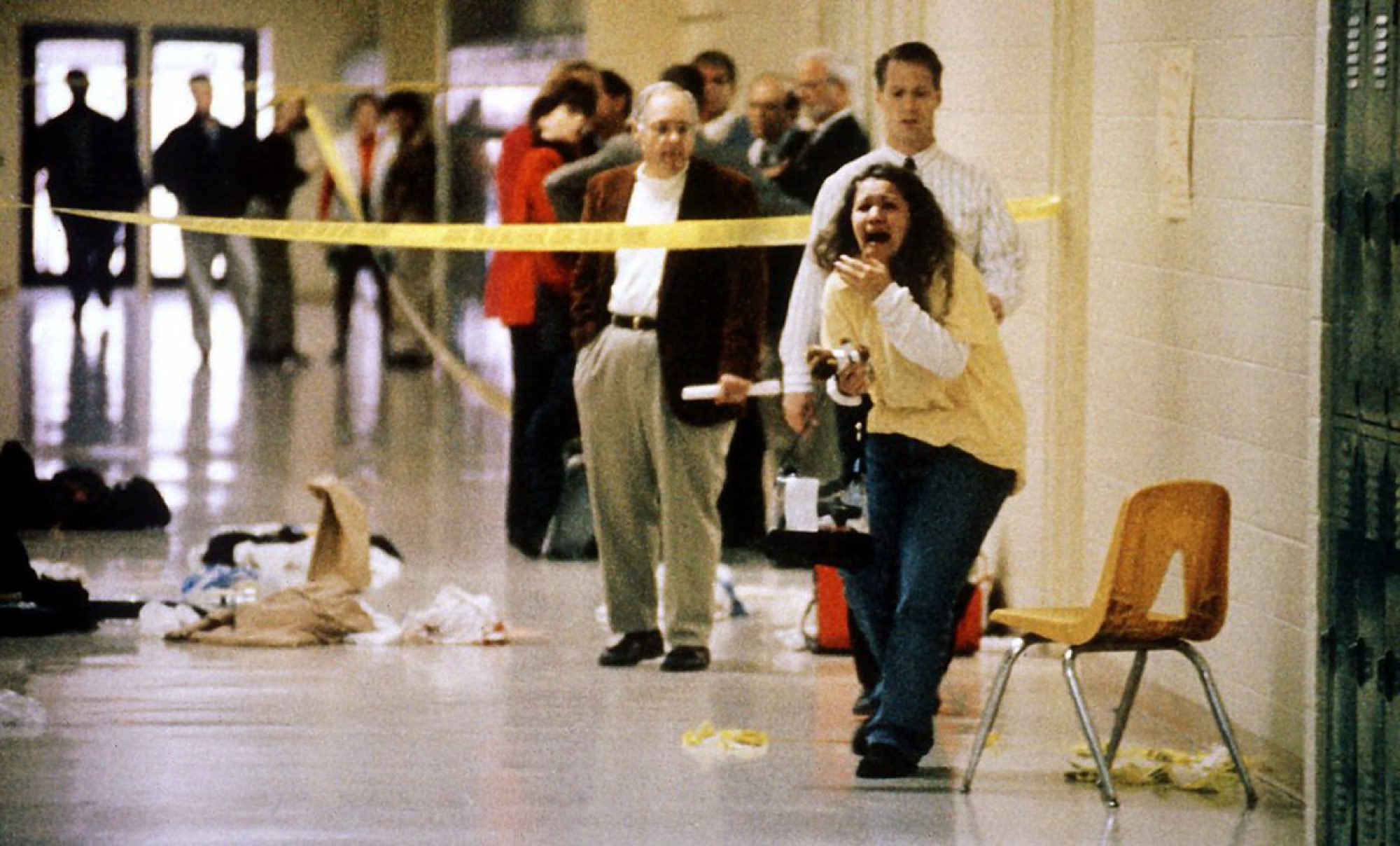 An inexplicable tragedy
An inexplicable tragedy
On December 1, 1997, a 14-year-old freshman walked into the lobby of Heath High School in Paducah, Kentucky, paused to insert earplugs, and calmly opened fire on a group of students participating in a morning prayer circle. Within a matter of seconds, the young man had dropped his gun, but not before shooting eight of his classmates, three of whom would die of their injuries, and one of whom would be paralyzed from the chest down. Western Kentuckians responded in the hours and days following the violence with shock and disbelief. The community had never experienced anything remotely like this. They had no blueprint for dealing with their intense grief. The cover of the Paducah Sun the next day encapsulated the collective sense of unreality, juxtaposing smiling school pictures of the three slain girls and the five wounded students with a photograph of a young woman screaming in a school lobby draped in crime scene tape. All this under the simple, poignant headline, “WHY?”
An all-too-familiar pattern
On the twentieth anniversary of the shooting in 2017, survivors, family and community members attended a service at the former Heath High School, now a middle school, where a new memorial to the shooting victims was dedicated. Less than two months later, and less than 35 miles away, a sophomore shot sixteen people at Marshall County High School, killing two. Western Kentuckians were once again shaken and distraught, but they were perhaps not quite as shocked as they had been in 1997. Of course, no one expected a shooting at Marshall, and the victims and their families had no inkling of the horror that awaited them the morning of January 23, 2018. Yet the Marshall shooting now fit a dreadful, but all-too-familiar, pattern. Former Heath students, faculty and family members reached out to the neighboring Marshall County community to offer condolences and solidarity. This may have been the first time the Heath survivors had offered this type of support so close to home, but many had already done so numerous times in the wake of school shootings at Columbine, Virginia Tech, Northern Illinois, Sandy Hook, and other locations.
On the front page
In 1997, the Heath shooting attracted national and international media attention. Helicopters and cars bearing the logos of faraway television stations and newspapers descended upon the town within hours, carrying reporters and photographers with little to no advance knowledge of the community or the events that had taken place there (one Louisville, Kentucky reporter recalled that a superior had told him to start driving the 215 miles west to Paducah, but had neglected to tell him why). Their outsider status led the out-of-town media to focus on different elements of the story than the local media, and it led to at least one grave error, as the Louisville Courier Journal printed a picture on its front page of a young man they inaccurately labeled as the shooter. This misidentified picture was picked up and distributed by the Associated Press, gracing newspapers nationwide.
Old news
Over the years, especially after the even more widely reported violence at Columbine High School the following year, which played out live on national television, school shootings have been a frequent subject of news coverage and public debate. A variety of salient concerns regarding these incidents have emerged and evolved over the years in the news as well as in courts, legislatures, and, increasingly, online. Bullying, gun control, and the role of school resource officers remain perennial sources of anxiety. However, the focus of some of the public discourse has shifted somewhat over the years, with early worries about atheism or Satanism and violent media as causes of murderous outbursts eventually yielding to discussions about inadequate mental health services. Even as school violence remains a topic of continued media attention, the shooting at Heath is rarely mentioned outside Western Kentucky. Not only was it two decades ago, but by some measures the Heath incident does not meet the numerical criteria to be considered a “mass” shooting.*
Memory and forgetting
In June of 2017, in discussing the planned twentieth anniversary memorial, Christina Hadley Ellegood, sister of Heath shooting victim Nicole Hadley, lamented that many people seem to have forgotten the tragedy at Heath:
The shooting is basically not mentioned anymore. The media doesn’t ever talk about it. A lot of people who were there when the shooting happened get upset about that because it’s something that changed a lot of people’s lives. It wasn’t just the students and the school — the entire community was changed by it.**
Of course, the violence at nearby Marshall County ensured that the Heath shooting would be discussed again, especially in Western Kentucky, and the tragic shooting just three weeks later at Marjory Stoneman Douglas High School in Parkland, Florida served to push school shootings and student protest to the center of the nation’s attention. At the same time, in the wake of larger shootings like the one at Parkland, smaller incidents like those at Heath and Marshall are rarely mentioned by name. It would be unreasonable, and perhaps unhelpful, for journalists to mention every school shooting every time they discuss school violence, but that does not change the concern of communities like Heath that their loved ones, their pain, their resilience and their lessons are being forgotten.
Oral history
The purpose of oral history is to preserve living memory. The goals of the Heath High School Shooting Oral Histories Project are twofold:
- To record the memories of those directly affected by the 1997 Heath High School shooting regarding the shooting itself, its aftermath, and the way the incident was portrayed in local and national media.
- To explore how these individuals have coped with the experience over the years and how they have responded to subsequent school shootings, particularly the 2018 school shooting in neighboring Marshall County, as well as to the media coverage and public debate that has emerged surrounding these events.
This project will both preserve the memories of the Heath community and explore how these memories have shaped and been shaped by these individuals’ subsequent experiences.
